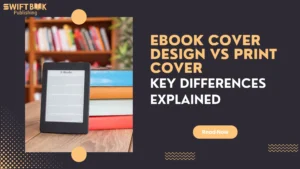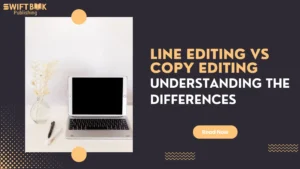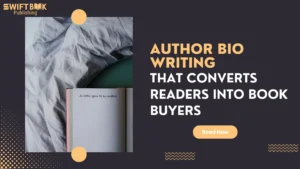A great cover sells books, full stop. But when you’re publishing across formats, a one-size-fits-all design won’t cut it. Designing for digital is not the same as designing for print, and understanding the differences is essential. That’s where the ebook cover design vs print cover debate begins.
Both formats require careful attention to layout, resolution, and audience expectations, but they serve different functions and environments. Whether you’re working with KDP or planning a bookstore release, getting your covers right is as important as what’s inside the book.
Why Format Affects Design
Before you even think about colour palettes or typography, you need to know how your book will be published. If you’re leaning toward self-publishing vs traditional publishing, you’ll likely have more say in design choices.
That’s a double-edged sword: more creative control, but more responsibility to get it right. The format you choose (digital, paperback, hardback) influences everything from file size to how your book is displayed online or on a shelf.
And if you’re producing across multiple book formats for genres, your cover needs to stay consistent while adapting to each use case.
eBook Cover Design: What to Know
eBook covers are designed for screens, usually viewed on phones, tablets, or eReaders. They need to grab attention even when shrunk down to thumbnail size.
Key Specs for eBooks
- Dimensions: Typically 1600 x 2560 pixels
- Resolution: 72 DPI (screen resolution)
- File Format: JPEG or TIFF
- No spine or back cover needed
- Must meet KDP requirements (or other platform specs)
Because eBooks are often discovered through scrolling, swiping, and split-second decisions, visual impact is everything. Clean typography, bold imagery, and minimal clutter are your best friends.
If you’re working with a book editor who’s helped shape your title or genre focus, ask them to weigh in on tone: Should your cover scream mystery, hint at romance, or promise professional insight?
Print Cover Design: What to Know
Print covers are a different beast. You’re designing a full spread, front cover, spine, and back cover, often with trim marks, barcode placement, and bleed zones to account for.
Key Specs for Print
- Resolution: 300 DPI (print quality)
- Trim size: Depends on page count and format
- Spine width: Calculated based on paper type and page count
- ISBNs and barcodes for books must be included
- Needs to hold up visually at full size and when printed
Your print cover also needs space for blurbs, reviews, and your author bio writing, something eBook covers don’t account for. This is especially important if you’re building a full package for author platform building and bookstore marketing.
Visual Impact: Digital vs Physical
One of the most overlooked differences in the ebook cover design vs print cover debate is how the reader interacts with each.
eBook readers scroll fast. The image is often viewed at a tiny scale. You need a strong focal point, legible text, and no small details.
Print readers, on the other hand, pick the book up. They flip it over. They feel the texture. You have more real estate and more time to make an impression. You can add foil, embossing, or matte finishes for tactile appeal.
Design for Genre and Audience
Just like narration changes across audiobook narration styles, cover design should match both your genre and reader expectations.
- Romance might lean toward pastel colours, soft fonts, or illustrated couples.
- Thrillers go for bold, high-contrast colour schemes
- Children’s books require fun, engaging visuals, especially if you collaborate with children’s book illustrators
- Non-fiction often calls for minimalist, clean layouts with clear messaging
If you’re unsure where to start, research similar titles in your genre and platform. Then create multiple concept drafts before choosing the final direction.
Common Mistakes and How to Avoid Them
-
Using the Same File for Both Formats
What works in print often flops online. Always design separate covers, optimised for the medium.
-
Ignoring Platform Requirements
Each publishing platform (KDP, IngramSpark, Apple Books) has different rules for dimensions, bleed, and safe zones. Using templates can save a lot of headaches.
-
Overloading Text
Especially on eBook covers, if it’s not readable at thumbnail size, it’s not helping you.
-
Forgetting About Branding
Your cover is part of your overall author identity. Make sure it fits with your voice, content style, and future marketing assets like your book trailer script or book influencer marketing campaigns.
How Book Cover Design Services Can Help
If design isn’t your strength, or you just want to save time, book cover design services are worth considering. They can help you:
- Develop genre-specific concepts
- Create separate versions for eBook and print
- Format for various distributors
- Integrate branding with your website, socials, and metadata
Professional designers also understand how to align covers with your book metadata, so your listing and visual presentation feel cohesive.
Cross-Format Strategies
If you’re planning to repurpose book content across formats (eBook, print, audio), your covers should visually connect while adapting to each platform. For audiobooks, for example, you may need square-format graphics for marketing or platform specs.
A solid visual strategy helps unify your launch campaign and supports assets like your author bio writing, influencer partnerships, and even future merchandising.
Final Touches That Make a Difference
- Add your ISBN and barcodes for books to the back cover before submission
- Review your final design with your editor, especially if you’ve been fact-checking nonfiction books and need blurbs or endorsements added
- Ensure your layout works for both trim size and page count. This can affect spine width and visual balance
And yes, once all that’s done, give your book a once-over using line editing vs copy editing principles. It helps keep your front and back cover blurbs sharp and error-free.
Conclusion
Understanding the difference between ebook cover design vs print cover can save you time, stress, and lost readers. It’s not just about creating something pretty. It’s about meeting expectations, fitting the format, and positioning your book to succeed.
So take the time to get it right. Whether you design your own or hire professionals, tailor your covers to the platforms you’re using, your genre, and your audience.
Want help tying your design into your broader launch? Check out our post on book influencer marketing, because once your book looks amazing, it’s time to get it in front of readers.







